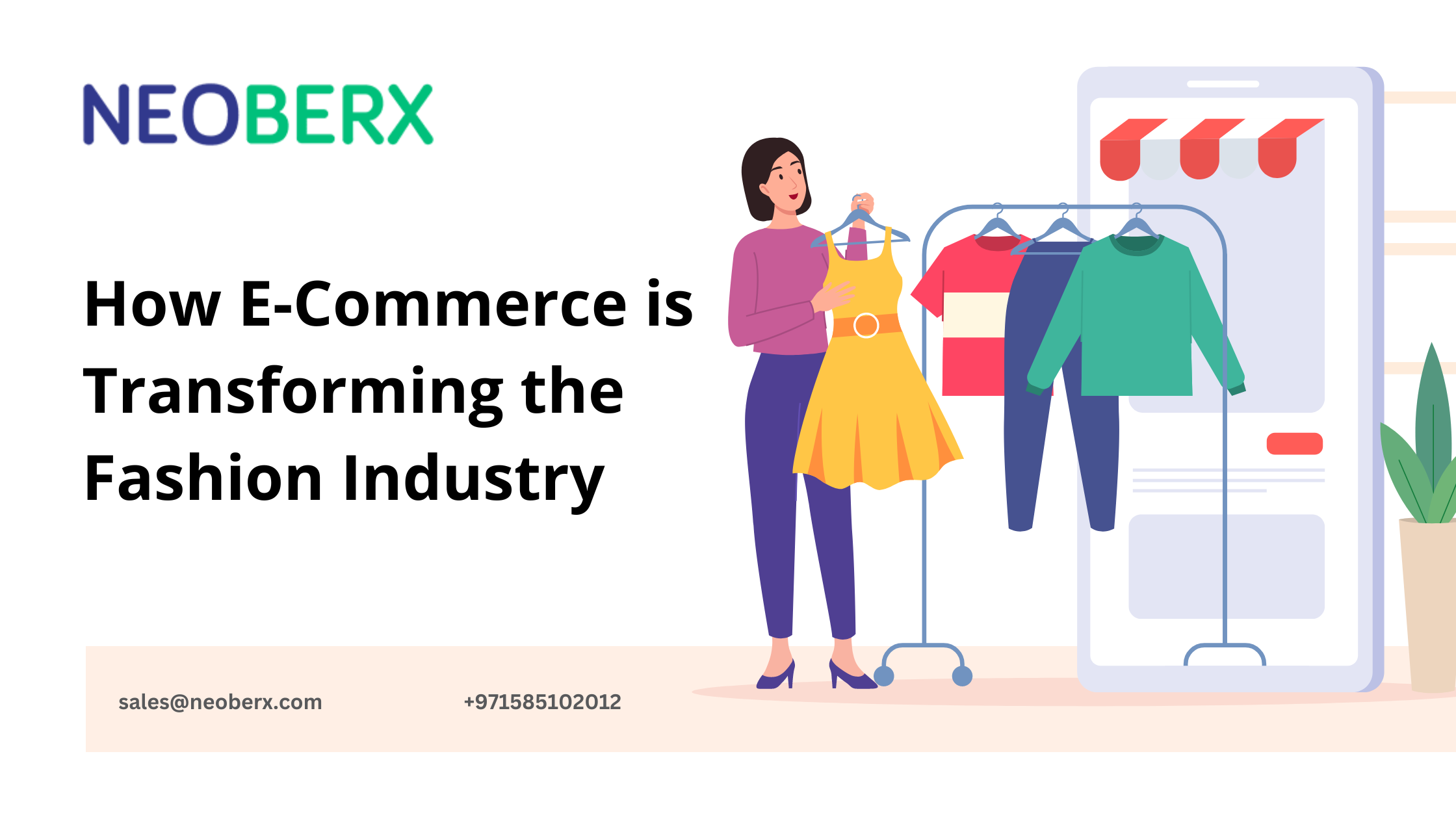The fashion industry is always on the move, adapting to the latest trends and consumer preferences. The rise of e-commerce has significantly sped up this transformation, changing how we buy clothes, accessories, and footwear. While online shopping offers remarkable convenience and variety, it also brings challenges that fashion brands need to address to succeed in the digital world. In this post, we’ll dive into the major benefits and obstacles of e-commerce in the fashion sector.
Key Benefits of E-Commerce in the Fashion Industry
1. Global Reach and Accessibility
E-commerce eliminates geographical limitations, enabling fashion brands to connect with customers worldwide. Shoppers can access their favorite brands from anywhere at any time, expanding the market reach and enhancing brand visibility globally.
2. Convenience and Time-Saving
E-commerce offers unmatched convenience, allowing customers to shop from home or on the go. This ease saves time and effort, fitting shopping into busy lifestyles. Services like home delivery and simple return policies further improve the shopping experience.
3. Personalized Shopping Experience
With advanced technologies like artificial intelligence and machine learning, e-commerce platforms can provide tailored shopping experiences. By analyzing customer preferences, these platforms recommend products that suit individual tastes, enhancing customer engagement and satisfaction.
4. Wider Range of Products
Unlike physical stores, e-commerce platforms can showcase a vast array of products. This allows the fashion industry to offer more styles, sizes, and colors, catering to diverse customer needs. Shoppers can explore various collections and find unique items not available locally.
5. Cost-Effectiveness
Operating an e-commerce store can be more economical than running multiple physical locations. Online stores cut down on expenses like retail space, reducing overhead costs. These savings can be passed on to customers through competitive pricing and attractive discounts.
6. Real-Time Analytics and Insights
E-commerce platforms provide valuable data on customer behavior and purchasing patterns. Fashion sector can use this information for better inventory management, marketing strategies, and product development. Real-time analytics help brands respond quickly to trends and market demands.
7. Sustainability and Ethical Practices
E-commerce supports sustainability by promoting eco-friendly materials and fair trade practices. Brands can highlight their commitment to ethical practices on their platforms. Additionally, online shopping reduces the carbon footprint associated with physical store visits.
8. Enhanced Customer Engagement
Social media integration and interactive features on e-commerce sites have revolutionized customer engagement. Brands can connect with their audience through social media, influencer collaborations, and user-generated content, fostering loyalty and encouraging repeat purchases.
9. Adaptability to Trends
E-commerce allows fashion brands to quickly adapt to changing trends by updating their online catalogs and launching new collections. This agility helps brands stay relevant and competitive in a fast-paced industry.
Key Challenges of E-Commerce in the Fashion Industry
- High Competition
The online fashion market is highly competitive, with countless brands vying for consumer attention. Standing out requires a strong brand identity, excellent customer service, and innovative marketing strategies. Smaller brands, in particular, may find it challenging to compete with established giants.
- Return and Exchange Logistics
One of the significant drawbacks of online shopping is the difficulty of handling returns and exchanges. Unlike in physical stores, where customers can try items on before purchasing, online shoppers often rely on size charts and images. This can lead to higher return rates, which complicates logistics and can be costly for businesses.
- Cybersecurity Concerns
As e-commerce grows, so do concerns about cybersecurity. Protecting customer data is paramount, and any breaches can severely damage a brand’s reputation. Fashion companies must invest in robust security measures to safeguard personal and financial information.
- Maintaining Brand Loyalty
Building and maintaining brand loyalty online can be more challenging than in a traditional retail environment. The ease of comparing prices and products means that customers can switch brands with minimal effort. Fashion industry must work harder to foster loyalty through exceptional customer service, quality products, and engaging online experiences.
- Technology Dependence
E-commerce relies heavily on technology, and any issues, such as website downtime or technical glitches, can disrupt business operations and negatively impact sales. Fashion sector must ensure their online platforms are reliable, user-friendly, and continuously updated to meet evolving consumer expectations.
Top E-Commerce Platforms for Fashion Brands: A Comparison Guide
Choosing the right e-commerce platform is crucial for reaching a global audience and streamlining operations. Here’s a comparison of some top platforms for fashion brands:
1. Shopify
- Overview: User-friendly with a wide range of features, suitable for all business sizes.
- Key Features: Intuitive interface, customizable themes, extensive app store, integrated payment options, mobile optimization.
- Pros: Easy setup, extensive support, scalable.
- Cons: Monthly fees can add up, limited customization without coding.
2. WooCommerce
- Overview: Free WordPress plugin for a highly customizable e-commerce site.
- Key Features: Flexibility, strong SEO, large community support, cost-effective.
- Pros: Total control over design, wide range of plugins, no core platform fees.
- Cons: Requires technical knowledge, separate management for hosting and security.
3. BigCommerce
- Overview: Robust platform with advanced features for growing brands.
- Key Features: Scalability, built-in tools, multi-channel selling, strong SEO.
- Pros: No transaction fees, comprehensive features, great for multi-channel selling.
- Cons: Higher cost, limited customization without coding.
4. Magento (Adobe Commerce)
- Overview: Powerful and flexible platform ideal for large brands with complex needs.
- Key Features: Customization, scalability, B2B support, advanced SEO and marketing tools.
- Pros: Highly scalable, extensive customization, robust support.
- Cons: Expensive, requires technical expertise.
5. Squarespace
- Overview: Website builder with integrated e-commerce, known for beautiful templates.
- Key Features: High-quality design templates, ease of use, built-in e-commerce tools, mobile optimization.
- Pros: Stunning templates, all-in-one platform, easy management.
- Cons: Limited customization, fewer third-party integrations.
Future Trends in Fashion E-Commerce
Several trends are shaping the future of fashion e-commerce:
1. Artificial Intelligence (AI)
AI enhances the e-commerce experience through chatbots, personalized recommendations, and smart inventory management, making online shopping more efficient.
2. Sustainability and Ethical Fashion
Consumers demand transparency and sustainability. E-commerce platforms respond by highlighting eco-friendly products and transparent sourcing and manufacturing practices.
3. Augmented Reality (AR) and Virtual Try-Ons
AR technology allows customers to visualize products without trying them on, offering an immersive shopping experience that reduces returns.
4. Social Commerce
The fusion of e-commerce with social media is gaining traction. Features like shoppable posts and live-stream shopping events allow purchases directly from social media apps.
5. Subscription Services and Rental Models
Subscription boxes and rental services offer convenience and variety, promoting a sustainable approach to fashion consumption.
Starting a Successful Fashion E-Commerce Store: Tips and Best Practices
Starting a fashion e-commerce store is an exciting venture. Here are some tips for success:
1. Define Your Niche and Brand Identity
Identify your niche and create a unique brand story, logo, and aesthetic that resonates with your target audience.
2. Choose the Right E-Commerce Platform
Select a platform like Shopify, WooCommerce, or Magento that suits your business needs, focusing on ease of use, customization, scalability, and integration.
3. Invest in High-Quality Product Images and Descriptions
Professional photography and detailed descriptions are crucial. Provide information on materials, sizing, and care instructions to guide customer decisions.
4. Optimize for Mobile
Ensure your website is mobile-friendly, offering a seamless shopping experience across all devices.
5. Implement Effective SEO Strategies
Optimize product pages with relevant keywords, descriptive titles, meta descriptions, and alt tags for images. Regularly update your blog with relevant content.
6. Provide Excellent Customer Service
Offer multiple customer support channels and clear return policies. Respond promptly to inquiries and resolve issues professionally.
7. Leverage Social Media Marketing
Use platforms like Instagram, Facebook, and Pinterest to showcase products, engage with your audience, and run targeted ads.
8. Analyze and Improve
Regularly monitor performance metrics using tools like Google Analytics. Use data to make informed decisions and enhance your store’s performance.
Why Choose Neoberx for Your Fashion E-Commerce Store?
Partnering with an experienced agency can make all the difference in building a successful fashion e-commerce store. Neoberx is a leading e-commerce agency specializing in creating customized, high-performing online stores. Here’s why you should choose Neoberx:
- Expertise: With years of experience in e-commerce development, Neoberx has the expertise to create a store that meets your unique needs and exceeds your expectations.
- Customization: Neoberx offers tailored solutions that align with your brand identity and business goals.
- Support: From the initial design to ongoing maintenance, Neoberx provides comprehensive support to ensure your store’s success.
- Results-Driven: Neoberx focuses on delivering results, helping you achieve higher traffic, better conversion rates, and increased sales.
Starting a fashion e-commerce store can be a rewarding journey with the right approach. By following these tips and partnering with a reliable agency like Neoberx, you can create a successful online store that stands out in the competitive fashion industry. Ready to take the next step? Reach out to Neoberx today and let us help you bring your fashion e-commerce vision to life.


